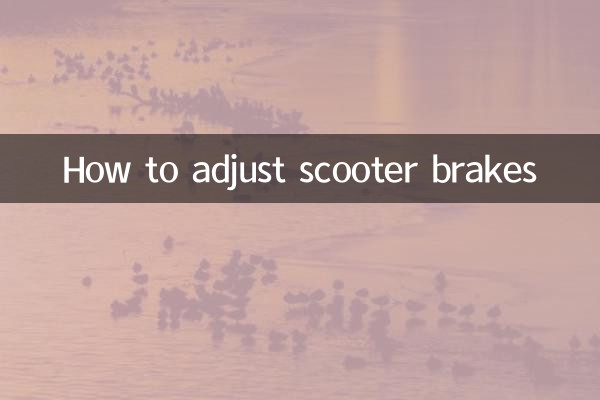How to adjust scooter brakes
In recent years, scooters have become a popular choice for short-distance travel in cities due to their convenience and affordability. As the number of users increases, issues related to scooter maintenance and adjustment have also attracted much attention, especially the adjustment of the brake system. This article will combine the hot topics and hot content on the Internet in the past 10 days to introduce you to the adjustment method of scooter brakes in detail, and provide structured data for reference.
1. The importance of brake adjustment

The braking system is the core component for safe driving of a scooter. If the brakes are too loose, the braking distance may be too long; if the brakes are too tight, the brake pads may wear out too quickly or the wheels may lock. Therefore, regular brake inspection and adjustment is key to ensuring safe riding.
2. Brake adjustment steps
Here are the detailed steps for adjusting your scooter brakes:
| step | Operation content | Things to note |
|---|---|---|
| 1. Check the brake line | Look for loose or frayed brake cables and make sure they are intact. | If wear or breakage is found, replace it immediately. |
| 2. Adjust the brake handle | Adjust the tightness of the brake by turning the adjusting nut on the brake handle. | After adjustment, the handle stroke needs to be tested to ensure that it feels comfortable. |
| 3. Check the brake pads | Observe the wear of the brake pads. If the thickness is less than 2mm, replace it. | Avoid using seriously worn brake pads to avoid affecting the braking effect. |
| 4. Adjust brake calipers | Loosen the caliper fixing bolts, adjust the caliper position so that the brake pads are parallel to the brake disc, and then tighten the bolts. | Make sure the brake pads and brake discs are in even contact to avoid eccentric wear. |
| 5. Test the braking effect | Ride at low speed on a safe road section and test whether the brakes are sensitive and make no abnormal noise. | If problems are found, recheck and adjust. |
3. Popular topics and user feedback
According to the entire network data in the past 10 days, the following are the popular discussions and user feedback on scooter brake issues:
| topic | Discussion popularity | Users’ main concerns |
|---|---|---|
| Abnormal brake noise | high | How to eliminate squealing noise when braking |
| Brake failure | middle | How to deal with brake failure in an emergency |
| Brake pad replacement cycle | high | How often should you replace brake pads? |
| DIY brake adjustment | middle | Things to note when adjusting your own brakes |
4. Frequently Asked Questions
1. What should I do if there is abnormal noise when braking?
Abnormal brake noise is usually caused by foreign matter on the brake pads or the brake pads and brake discs not fully fitting. You can try cleaning the brake pads and discs, or repositioning the calipers.
2. How to adjust the brake handle stroke if it is too long?
Shorten the brake cable length by turning the adjusting nut on the brake cable, or check the brake pads for excessive wear.
3. How often do brake pads need to be replaced?
Under normal circumstances, brake pads need to be inspected every 2000-3000 kilometers and should be replaced when the thickness is less than 2mm.
5. Summary
Adjusting scooter brakes is not complicated, but it does require patience and care. Regularly checking the brake system and timely adjusting or replacing worn parts can significantly improve riding safety. If you are not sure about adjusting it yourself, it is recommended to go to a professional repair shop to handle it.
Through the above content, I hope you can better master the adjustment method of scooter brakes and enjoy a safe and smooth riding experience!

check the details

check the details